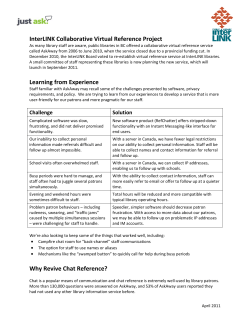
CHAT Psychometrics
BACKGROUND Independence of the Three Severity Subscales Hallucinations are a prominent symptom of schizophrenia and other psychotic disorders, but the neuropathology underlying these aberrant sensory experiences remains poorly understood, particularly in sensory modalities other than auditory. The lack of connection between hallucinations and underlying brain dysfunction could be due to low sensitivity in hallucination measurement, which is typically one item from the PANSS, or frequency-focused items in the SAPS. Although not commonly used, a “gold standard” instrument for measuring auditory hallucination severity is the 11-item PSYRATS-AH1. It reported 3 severity factors – physical characteristics, cognitive, and emotional. We developed a semi-structured interview, the Chicago Hallucination Assessment Tool (CHAT), to improve hallucination assessment sensitivity for use in conjunction with neurobiological studies of hallucinations. AUDITORY Physical Cognitive Past Current Past Current Cognitive .41 .29 * * Emotional .46 .61 .38 .42 VISUAL Physical Inter-Rater Agreement Cognitive Past Current Past Current Cognitive .35 .58 * * Emotional .28 .53 .71 .46 Test-Retest Reliability The Chicago Hallucination Assessment Tool Total Past/Worst Visual Hallucination Score Time 1 and Time 2 r = 0.78 3-point discrepancy CHAT AH Physical Severity SAPS Auditory (n = 30) and… r = 0.66 CHAT AH Cognitive Severity r = 0.03 CHAT AH Emotional Severity r = 0.32 CHAT VH Physical Severity r = 0.9 SAPS Visual (n = 21) and… Auditory • CHAT expands the PSYRATS-AH SAPS Tactile (n = 9) and… Visual • All sensory modalities are assessed • Scores for both Current and Worst/Past time PSYCHOMETRIC STUDY PROCEDURES: CHAT VH Cognitive Severity r = -0.013 CHAT TH Cognitive Severity r = 0.37 Olfactory CHAT OH Physical Severity r = 0.5 psychiatry clinic and from community advertisement to obtain a range of severity SAPS Olfactory (n = 8) and… •3 new visual hallucinations that raters found “indeterminate” •1 new olfactory hallucination •2 new tactile hallucinations CURRENT SCORES PAST/ WORST SCORES Total Sample Test-Retest Reliability Sample* 30 schizophrenia 20 schizoaffective 15 mood disorder w/ psychosis 11 schizophrenia 7 schizoaffective 2 mood disorder w/ psychosis Mean (SD) Age 41 (+/- 11 years) 36 (+/- 11 years) Mean (SD) Years of Education 12.92 (+/- 2.6) 13.1 (+/- 1.7) Gender 31 male 32 female 11 male 9 female Neither interval length between test and retest nor general illness severity predicted differences between test and retest scores. Types of Hallucinations Reported CHAT OH Cognitive Severity r = -0.41 CHAT OH Emotional Severity r = -0.47 PANSS Total (n=65) and… CHAT Current Total Severity r = .28 PANSS Positive and… CHAT Current Total Severity r = .43 PANSS Negative and… CHAT Current Total Severity r = .04 PANSS General and… CHAT Current Total Severity r = .25 CONCLUSIONS • The Chicago Hallucination Assessment Tool (CHAT) shows good psychometric properties: High inter-rater agreement High test-retest reliability Wide range of scores (sensitivity) High correlation with existing measures where expected (and low correlation where expected) • A larger sample is needed for factor analytic studies to confirm or suggest alternative severity dimensional structure. • Future work will include additional psychometric studies and use of the scales alongside EEG and fMRI data as correlates of severity of brain function abnormalities…. *Test-retest interval ranged from 32-206 days, mean = 90 (+/- 50 days) 1. Haddock et al. (1999), Psych Med 29, 879-889 r = 0.68 CHAT TH Emotional Severity r = 0.65 3 cases of imperfect reporting of sensory modalities ever experienced between time 1 and time 2 interviews were all newly reported modalities at time 2 • Administered CHAT along with PSYRATS, SCID, PANSS, and SAPS hallucination items • Participants returned 4 weeks or more for test-retest assessment CHAT TH Physical Severity Tactile Gustatory • Outpatients recruited from medical center REFERENCE 2-point discrepancy CHAT VH Emotional Severity r = 0.13 • A 30-60 minute semi-structured interview Diagnosis Total Past/Worst Auditory Hallucination Score Time 1 and Time 2 r = 0.73 CHAT Scores What is the CHAT? Perfect Rating Agreement 92% Validity: Correlations with Other Hallucination and Psychopathology Measures 87% (20/23) of subjects reported the same sensory modalities for past/worst Total Past/Worst Score Time 1 and Time 2 r = 0.96 1-point discrepancy Visual: N= 35 past ; n = 11 current N= 51 past; n = 29 current hallucinations for both time 1 and 2 METHODS Item Score Agreement on 355 CHAT Items Across 7 Participants SUPPORT For such use of the CHAT, see talk Monday at 3:30 pm (Keedy, presenter): “Abnormal Evoked Responses to Task-Irrelevant Stimuli in Psychosis Patients Correlates with Hallucination Severity” This research was supported by NIH grant K23MH092702 (Keedy)
© Copyright 2025









